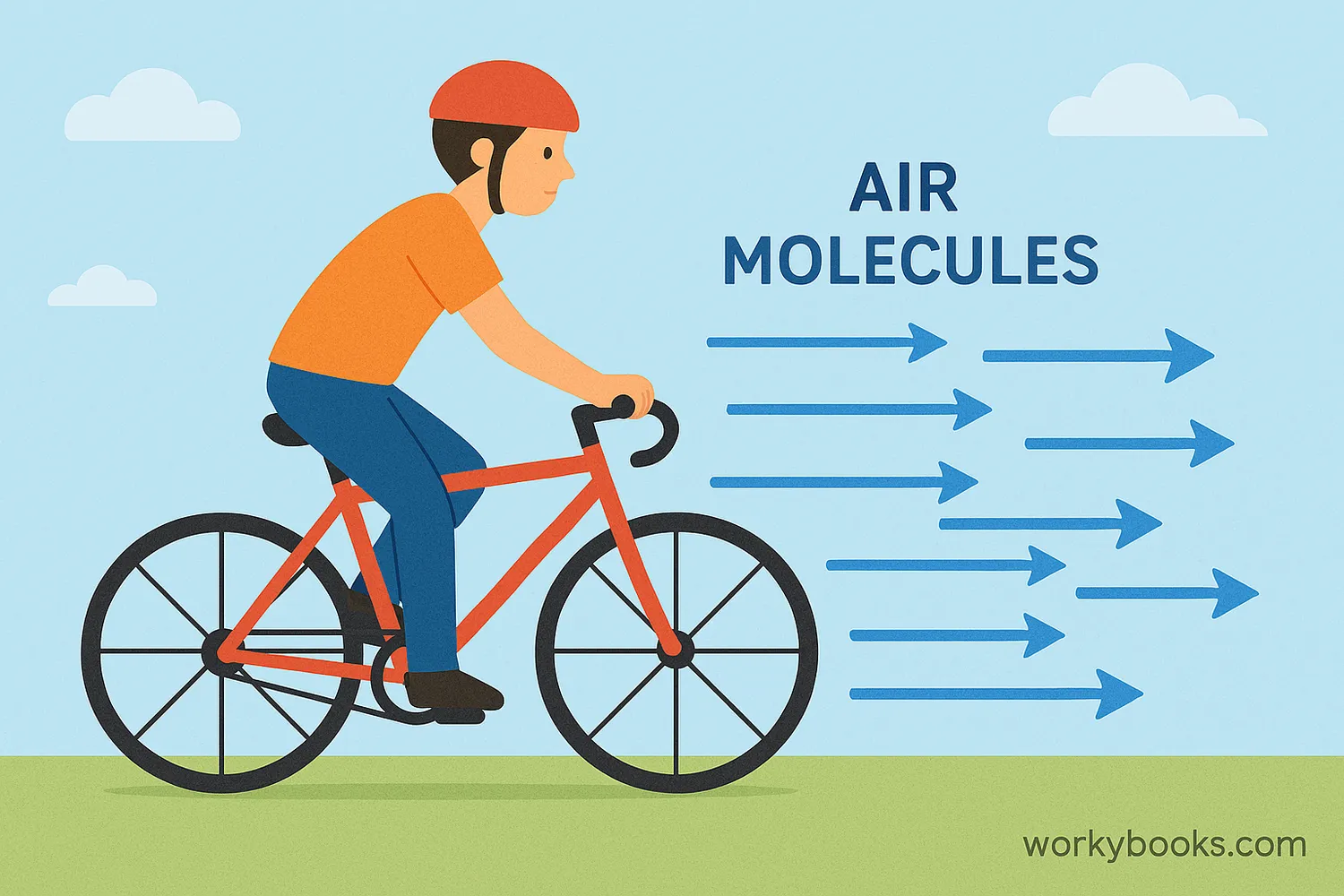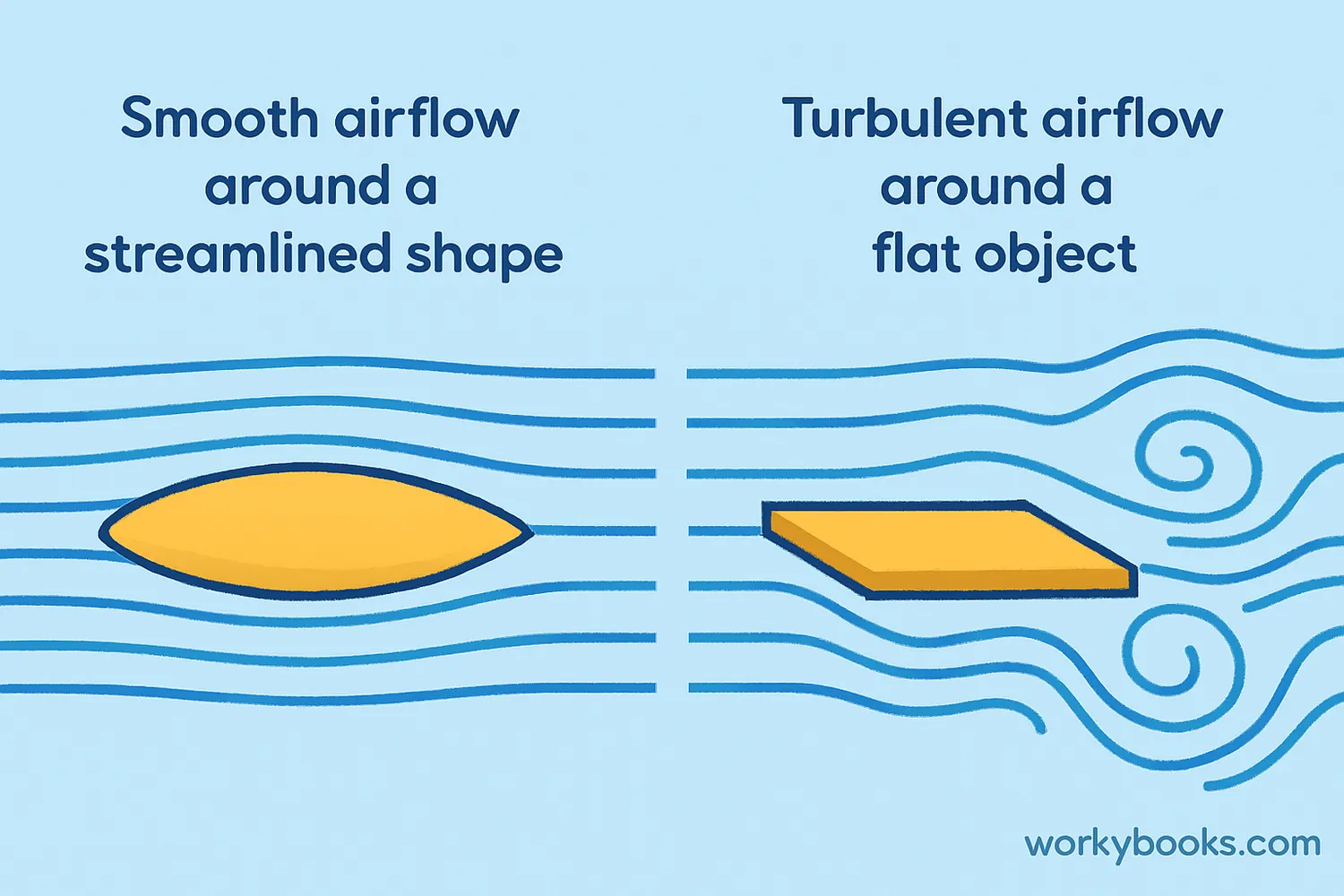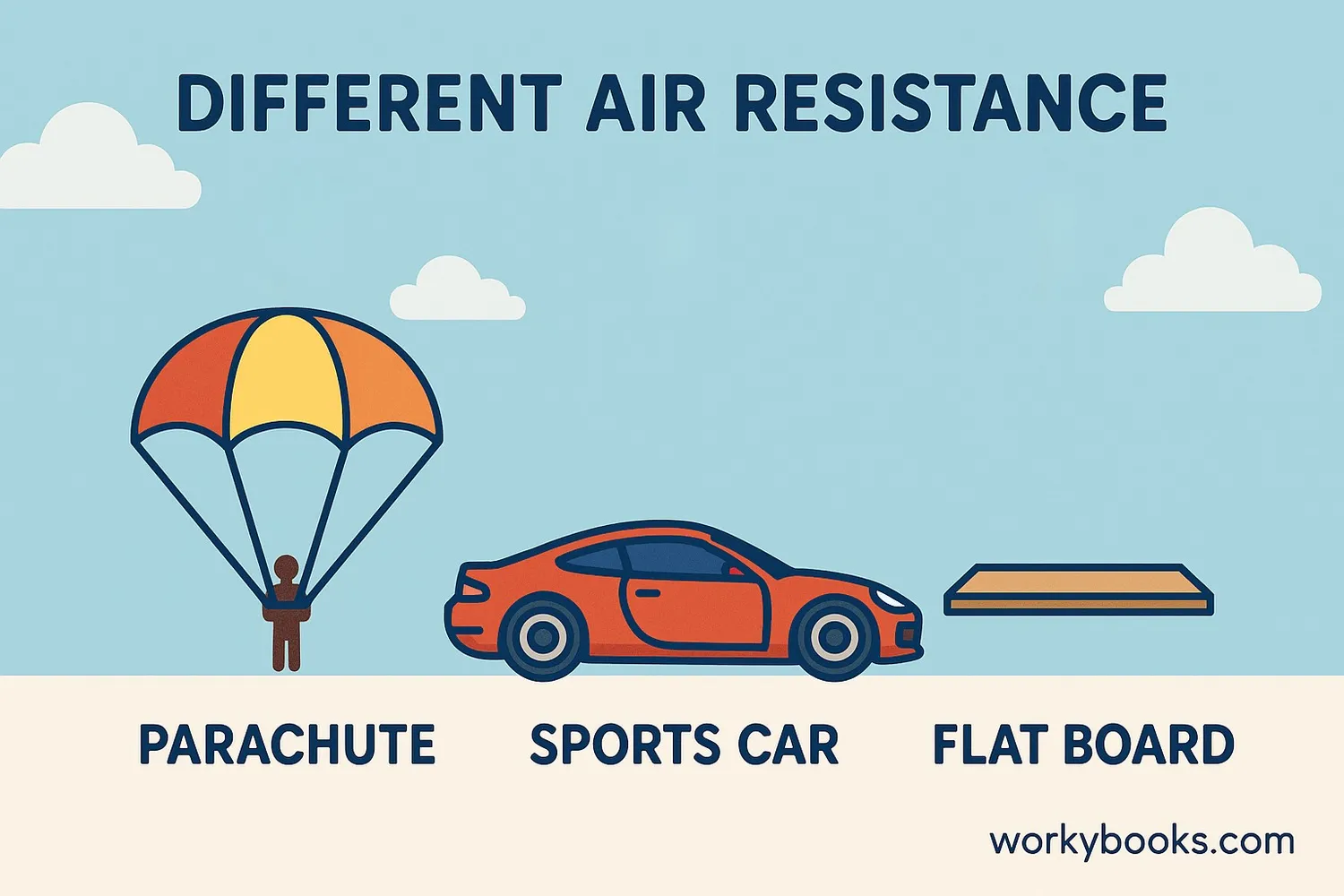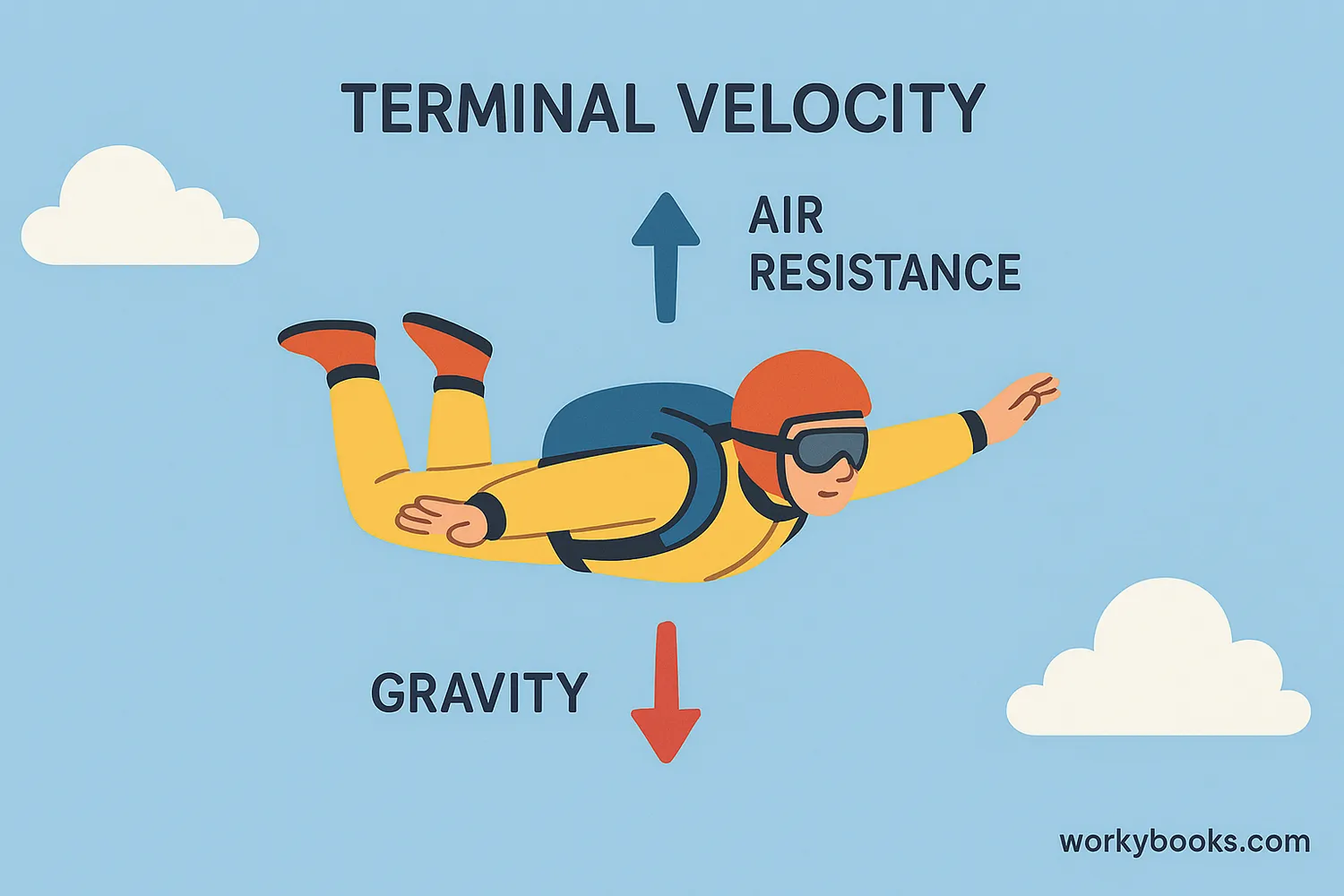Air Resistance - Definition, Examples, Quiz, FAQ, Trivia
Discover how air pushes against moving objects and affects motion!
What is Air Resistance?

Air resistance is a force that pushes against objects moving through air. Also called drag force or wind resistance, it's the reason you feel wind on your face when riding a bicycle or why it's harder to walk on a windy day.
When any object moves through air, it has to push air molecules out of the way. These air molecules push back against the object, creating resistance. This force always acts in the opposite direction to the object's motion.
Physics Fact!
Air resistance is a type of friction called "fluid friction" because air flows like a fluid around objects.
How Air Resistance Works

Air resistance works through collisions between air molecules and the surface of a moving object. As the object moves forward, it bumps into air molecules, pushing them aside. These molecules push back on the object, creating resistance.
The science of how air flows around objects is called aerodynamics. Engineers study aerodynamics to design cars, planes, and even sports equipment that can move through air with less resistance.
Object Moves
An object pushes through air molecules
Collisions
Air molecules collide with the object's surface
Force Creation
Each collision creates a tiny force against motion
Total Resistance
Millions of collisions create significant air resistance
Aerodynamic Drag!
Race cars are designed with smooth, curved shapes to reduce aerodynamic drag and move faster through air.
Factors Affecting Air Resistance

Four main factors determine how much air resistance an object experiences:
Speed
Faster movement = more collisions = greater resistance
Surface Area
Larger surfaces hit more air molecules
Shape
Streamlined shapes reduce resistance
Air Density
Thicker air (at lower altitudes) creates more resistance
Example: A parachute has a large surface area and special shape to create maximum air resistance and slow a person's fall. A racing bicycle has a small, streamlined shape to minimize resistance.
Terminal Velocity

Terminal velocity is the maximum speed a falling object can reach when air resistance balances the force of gravity. At this point, the object stops accelerating and falls at a constant speed.
Here's how it works:
1. Gravity pulls the object downward, making it accelerate
2. As speed increases, air resistance increases
3. Eventually, air resistance equals the force of gravity
4. The object stops accelerating and falls at constant speed
Skydiving Science!
A human skydiver reaches terminal velocity of about 120 mph (193 km/h) in a belly-down position. In a head-down position, they can reach 200 mph!
Air Resistance Quiz
Test your knowledge about air resistance with this quiz! Answer all 5 questions to see how much you've learned.
Frequently Asked Questions
Here are answers to some common questions about air resistance:
Fun Air Resistance Trivia
Discover some amazing facts about air resistance!
Speed Record
The fastest recorded terminal velocity by a human is 373 mph (600 km/h), achieved by Felix Baumgartner during his stratosphere jump in 2012.
Bird Aerodynamics
Birds reduce air resistance by flying in V-formations. Each bird flies in the upwash from the bird in front, reducing energy use by 20-30%.
Sports Science
Golf balls have dimples to create small air vortices that reduce drag. A smooth golf ball would travel only half as far as a dimpled one!
Nature's Design
Maple seeds have wing-like structures that create air resistance, allowing them to spin and float away from the parent tree.


